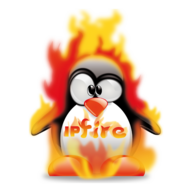Blocking access from certain countries is the job of

Blocking access from certain countries is the job of
You could setup a location group.
I have Flightaware/PiAware.
I am assuming you want to access the ADS-B flights while away from your network??
I have no outside access to green or orange. I access it via IPsec VPN. Much safer!
If you don’t want to use VPN, I’d still recommend DMZ. And I also recommend moving it from HTTP to HTTPS (443). And doing the country blocks.
Anything to keep out the evil…
I have OpenVPN on TCP 443, for all my other needs, especially when I travel outside US.
I access my ADS-B tar1090 interface on port 80, it’s simpler for me.
No-IP free web address, refreshed automatically.
That’s what I am using on ipfire, location block. But if I put my webserver IP on DMZ, I would lose that, won’t I? Isn’t location block part of the firewall?
I don’t know if Location Block would work. You’d need to try and monitor the logs.
I’d use Location Groups and I created a group called badActors_Country. And fill then it with:
China, N. Korea, Vietman, etc.
Then add a firewall rule:
Make sure you enable Log Rule so you can monitor it for bad actors.
That should work with DMZ.
I thought that the whole definition of DMZ is that by-passes the firewall.
I can add any rules in firewall, but the DMZ devices are not affected by them.
I would never put anything in DMZ.
I have changed now the port from 80 to something else, but that’s “security by obfuscation”, and it never pays…
I thought that the whole definition of DMZ is that by-passes the firewall.
Not in IPFire… It is not the same as what you would find in a home router.
 IPFire.org
IPFire.org

 IPFire.org
IPFire.org

You would need port forwards to reach DMZ from the WAN (RED)
Not in IPFire… It is not the same as what you would find in a home router.
I don’t know if that’s right nomenclature then. DMZ is never behind the firewall.
DMZ (computing) - Wikipedia
The purpose of a DMZ is to add an additional layer of security to an organization’s local area network (LAN): an external network node can access only what is exposed in the DMZ, while the rest of the organization’s network is protected behind a firewall.
per your wiki link.
" (sometimes referred to as a perimeter network or screened subnet) is a physical or logical subnetwork"
I think screened subnet applies here.
The 2 router option applies one behind the other.
Your requirements may very.
The DMZ is only reachable threw firewall rules.
The wiki article also “DMZ host”, a term in home routers.
I thought that the whole definition of DMZ is that by-passes the firewall.
I can add any rules in firewall, but the DMZ devices are not affected by them.
I would never put anything in DMZ.
This is not correct. The firewall and the firewall rules help protect the IPFire DMZ from evil.
I cannot answer for the article referenced or router DMZ. I am sure that is a different type or “flavor” of DMZ.
I have changed now the port from 80 to something else, but that’s “security by obfuscation”, and it never pays…
This is one of the reasons I encourage you to use VPN.
Read the Architecture section of that wiki site.
It describes a dmz in a single firewall where the dmz is connected to a seperate network interface and acces from and to the dmz is controlled by the firewall.
This description covers how the ipfire dmz is operated.
wiki links is not a reliable source for anything scientific.
But the IPFire wiki is the IPFire documentation. For basic definitions you can consult wikipedia articles or ‘scientific’ books about networking.
BTW: many networking terms are not scientific, but technical ( and sometimes implementation dependant ).
people shouldn’t have to consort wikipedia for anything. DMZ is just a set of firewall rules that could be applied to a machine or network. IPfire has a network DMZ, but just like any other network, the behaviour can be altered by firewall rules.
For example, I have my orange network set up as a device network by altering firewall rules to deny access to red from orange.
Surely, you can alter much rules/behaviour/policies.
But with this you just use the official IPFire names for your network interfaces, not the common usage defined in IPFire design.
BTW: wikipedia is nowadays the electronic replacement of a encyclopedia. It is not the famous “Encyclopedia Britanica”, but this isn’t/wasn’t used for alldays use.
I like the concept of the “the network of colors” and applying them as different networking zones. It was the reason long ago why I liked IPCop and why I like IPFire now.
Looking at how other people accomplish this without setting up a multi zone network, it seems most rely on vlans but there is drawbacks to this. One of them is firewalls lacking implementing rules directly on them.